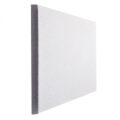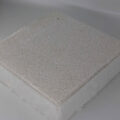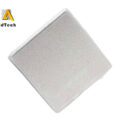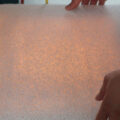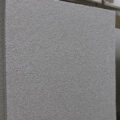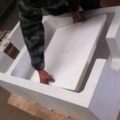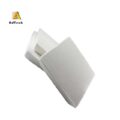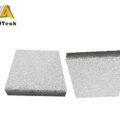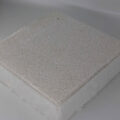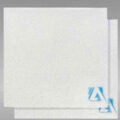After using the ceramic foam filter for metal casting, the rectifying effect of the ceramic foam filter can be fully demonstrated. The molten metal flowing through the ceramic foam filter has a trickle and converges into the mainstream of laminar flow. The laminar flow state of molten metal fills smoothly, avoiding the secondary oxidation and entrapment of molten metal, and effectively solving the cracks on the casting surface.

The purification mechanism of the ceramic foam filter system roughly includes the following aspects:
Interception and blocking: In general, large-volume inclusions are easily intercepted and blocked directly by the filter. “20ppi” foam ceramic filter (20ppi is a model, which means that the uniformity of pores on any 25.4 mm length is 17 ~ 23 The porous ceramic foam filter for metal casting is usually more effective in blocking inclusions with a particle size of 50 μm or more. With the passage of a certain amount of metal melt, a filter cake will form on the surface of the filter inlet, and thereafter the flow rate of the melt through the filter will be significantly reduced. On the one hand, due to the decrease in the inner diameter of the inlet, the probability of interception of smaller particle size inclusions increases, and the removal efficiency of small particle size inclusions increases; on the other hand, due to the reduction of the cross-sectional area of the molten metal flow channel, the molten metal Replenishment is blocked, and casting defects such as delayed feeding and shrinkage are likely to occur.
The molten metal and inclusions are generally non-wetting. The smaller the particle size of the inclusions, the worse the wettability. Therefore, small particle inclusions below 50 μm need to be removed by the adsorption mechanism. When the inclusions flow through the wall of the filter, because the inclusions are in contact with the filter surface with better mutual wettability, they are easily separated from the molten metal and are absorbed by the wall of the filter. If the pores of the filter are small, the filter channel is longer, and the flow rate is slow enough, the inclusions in the molten metal are more likely to contact the inner wall of the filter, and the efficiency of the inclusions captured by the filter is higher. However, small particle inclusions with a particle diameter of less than 10 μm are difficult to remove by adsorption.
The molten metal passes through the filter, which generally makes the molten metal in the turbulent flow state tend to become a laminar flow state. Makes the molten metal flowing through the filter (net) fills smoothly, avoiding secondary oxidation and entrapment of the molten metal.

